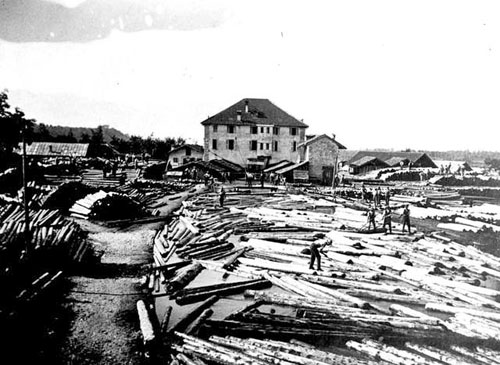| Card n. | Description | Locality | Linked sites |
| 65 | Meli sawmills and industrial establishments along the Lower Cordevole | Sedico | 122 - 20 |
| file .pdf | Industrial Archaeology (AI) | Google maps |
 |
- Description
- How to get there
- Interesting facts
- Bibliography
For centuries, along the flow of the Cordevole, between Roe Alte and the village of Bribano, there was an arm of water used to provide hydraulic power for a large number of establishments that have been exceptionally preserved, together with much of their more recent machinery, although all of them have now closed down. Parallel to the activity that went on along the flow of the Piave at Perarolo, here timber from the forests in the Agordino area and some of the valleys in Trentino was also floated down the torrent in individual trunks, before being channelled into the irrigation channels and sent to the sawmills, where the trunks were cut into saleable sizes, tied onto the rafts and sent down the brief navigable stretch of the Cordevole to the nearby Piave and from there to Venice. The Meli sawmills and the sawmills of Villa were the largest and most important of those built on the left bank of the Cordevole, but the earliest industrial establishments were presumably small and owned initially by local noblemen or landowners. Meli, which from the Middle Ages was home to mills, sawmills, forges, and more recently a paper mill, probably takes its name from the “lamelle”, the diminutive of the iron blades used to saw the tree trunks. Towards the far north of the route is the hydroelectric power plant, on the right bank, in the municipality of Sospirolo, and the ammonia factory, which did not close until 1968. The industrial archaeology site is part of a route that runs along the left bank of the Cordevole and features panels illustrating the most significant points of interest along the way.

